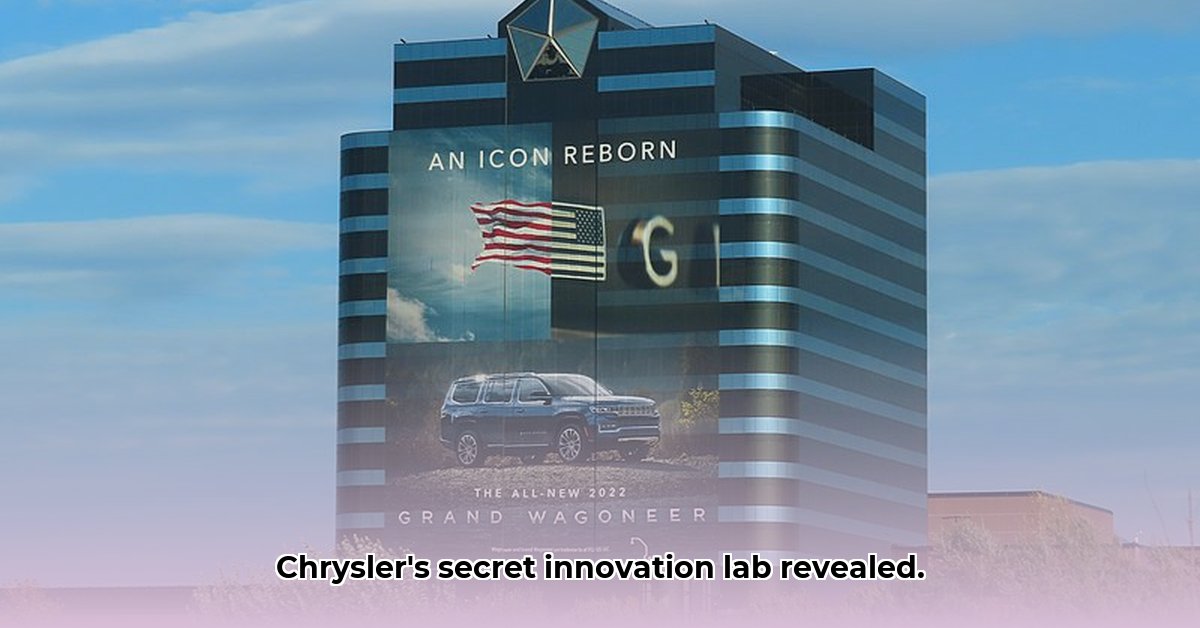
1000 Chrysler Drive: A Michigan Monument to Automotive Ingenuity
The Chrysler Technology Center (CTC), located at 1000 Chrysler Drive in Auburn Hills, Michigan, is more than just a building; it's a testament to American automotive engineering. This 5.4-million-square-foot complex, built during an era of American automotive dominance, houses a vast array of advanced testing facilities, including wind tunnels, climate-controlled chambers, and extensive test tracks—all under one roof. This integrated approach, revolutionary for its time, streamlined the design and testing process from concept to production. However, the automotive landscape has shifted dramatically. How has this impressive facility adapted to the evolving technological and market demands? For more information, visit the CTC Headquarters.
A Technological Powerhouse: Then and Now
The CTC's initial technological advantage was undeniable. Its sophisticated infrastructure represented a significant leap forward in automotive R&D. But maintaining this cutting-edge status requires continuous investment and adaptation. Has the scale of the CTC, once a significant competitive advantage, become a potential liability in the face of rapid technological advancements and the agile nature of modern innovation? The answer requires a detailed examination of its current capabilities and their alignment with the future of the automotive industry.
The CTC's Journey: From Chrysler to Stellantis and Beyond
The CTC's history mirrors the dramatic transformations within the global automotive industry. Its journey encompasses the rise and fall of partnerships, the creation of DaimlerChrysler, the evolution into Fiat Chrysler Automobiles (FCA), and ultimately, the formation of Stellantis. Each merger and acquisition presented unique challenges and opportunities, requiring strategic adaptations to maintain the facility's relevance and competitiveness. How did 1000 Chrysler Drive successfully navigate these periods of significant change? What strategies were employed to ensure its continued success within the evolving corporate landscape?
The Economic Engine of Auburn Hills: Measuring the Impact
While precise financial data on the CTC's return on investment (ROI) is not publicly available, its economic impact on Auburn Hills is substantial. The facility's thousands of employees contribute significantly to the local economy, supporting numerous ancillary businesses and fostering overall economic growth in the region. But beyond the purely economic benefits, what are the intangible contributions of the CTC to the community? Does it serve as a hub for innovation, fostering a culture of technological advancement that extends beyond its walls? Does its presence attract and retain a skilled workforce, contributing to the long-term growth of the local talent pool? These are crucial questions to consider for a comprehensive assessment.
Navigating Challenges and Seizing Opportunities: The CTC's Future
The automotive industry is remarkably dynamic, constantly adapting to new technologies and evolving consumer preferences. What are the most pressing challenges faced by 1000 Chrysler Drive today? Is technological obsolescence a significant threat? How effectively can the facility adapt to the increasing demands of electric vehicles (EVs) and autonomous driving technologies? Does its considerable size present challenges in terms of agility and flexibility, or does it provide a unique advantage—stability and resources in the face of disruption?
Modernization and Strategic Decisions for the Future
Stellantis faces crucial strategic decisions regarding the long-term viability of 1000 Chrysler Drive. Should significant investments be made in modernization? Should the company maintain its large, centralized facility, or explore alternative models such as outsourcing certain functions, forging collaborative partnerships or establishing smaller, more regionally focused facilities? These decisions require a comprehensive cost-benefit analysis. What are the potential trade-offs between cost savings and the benefits of a centralized hub for research and development?
A Legacy of Innovation: Looking Ahead
1000 Chrysler Drive is more than just a building; it represents decades of American automotive innovation. Its history serves as a compelling case study, illustrating both the potential rewards and inherent challenges of large-scale R&D investments. Its future trajectory depends heavily on Stellantis' strategic vision and its capacity to adapt and innovate. While the CTC's legacy is undeniably impressive, its continued success hinges on its ability to navigate the ever-changing automotive landscape.
Three Pivotal Points:
- The CTC's integrated design, revolutionary for its time, streamlined automotive R&D.
- The facility's economic impact on Auburn Hills is substantial, extending beyond direct employment.
- Stellantis faces critical decisions regarding modernization and the long-term utilization of the CTC.